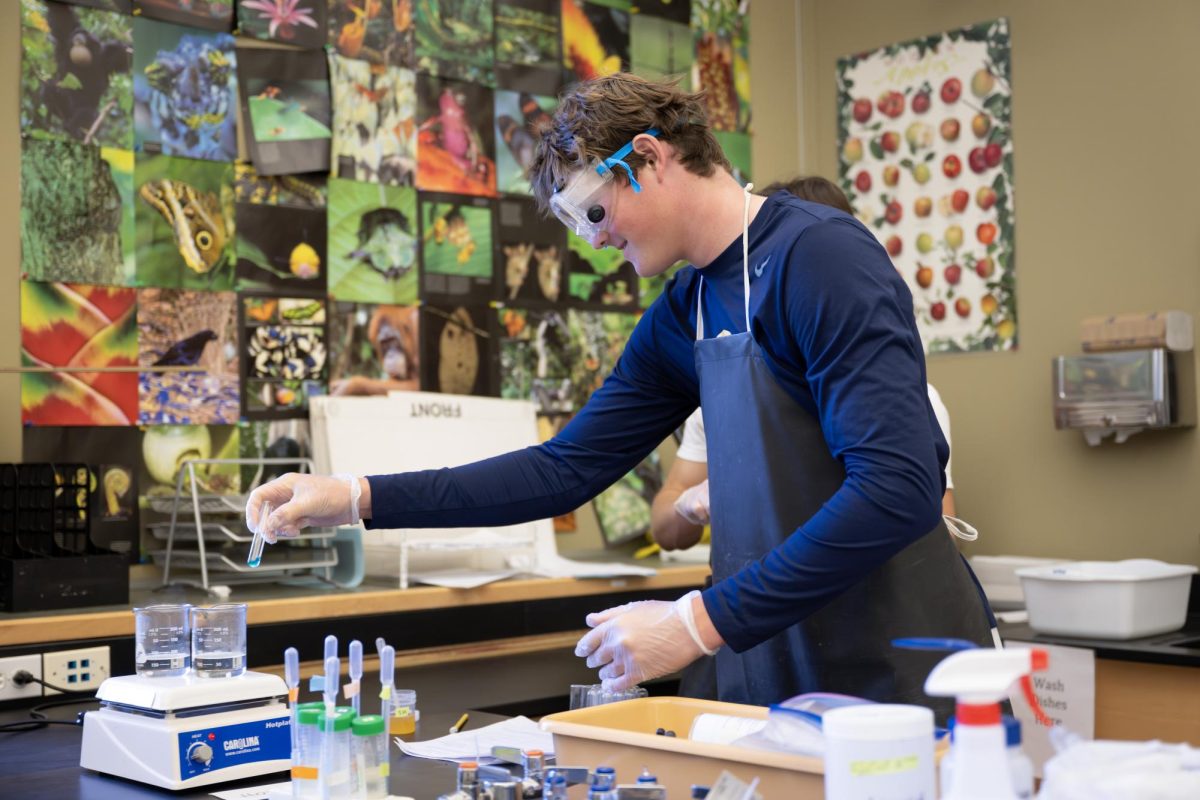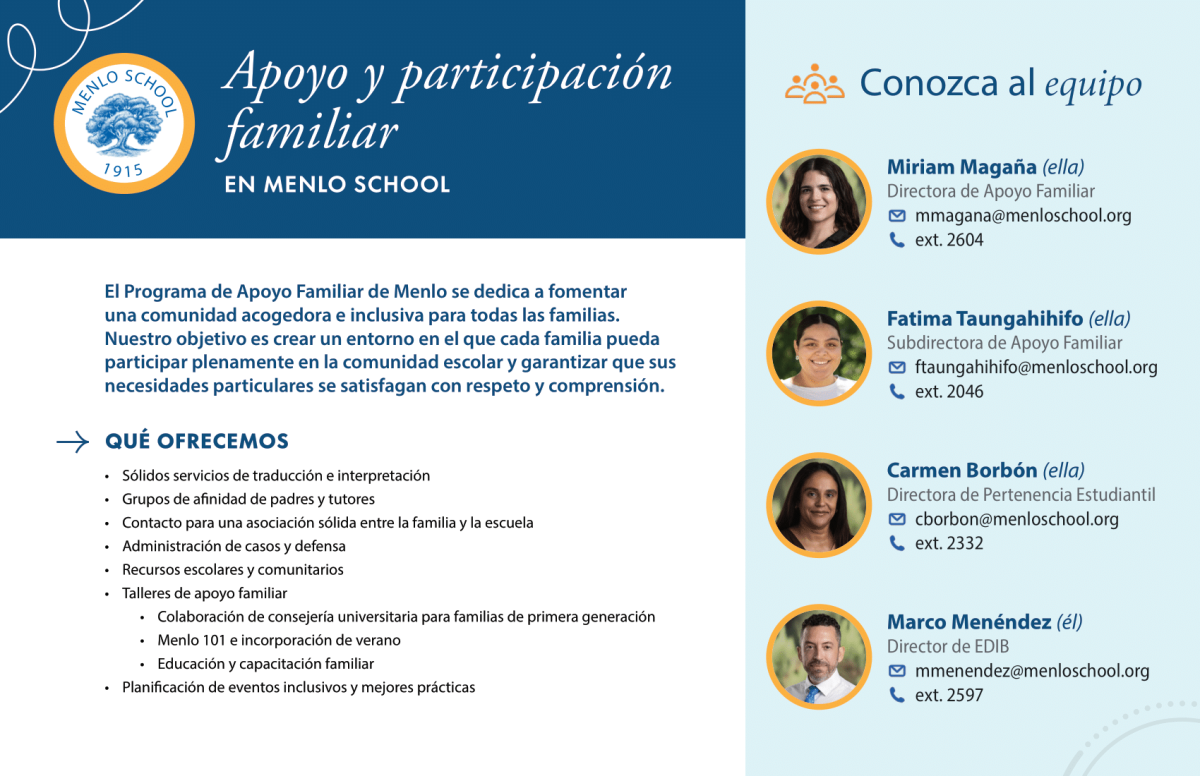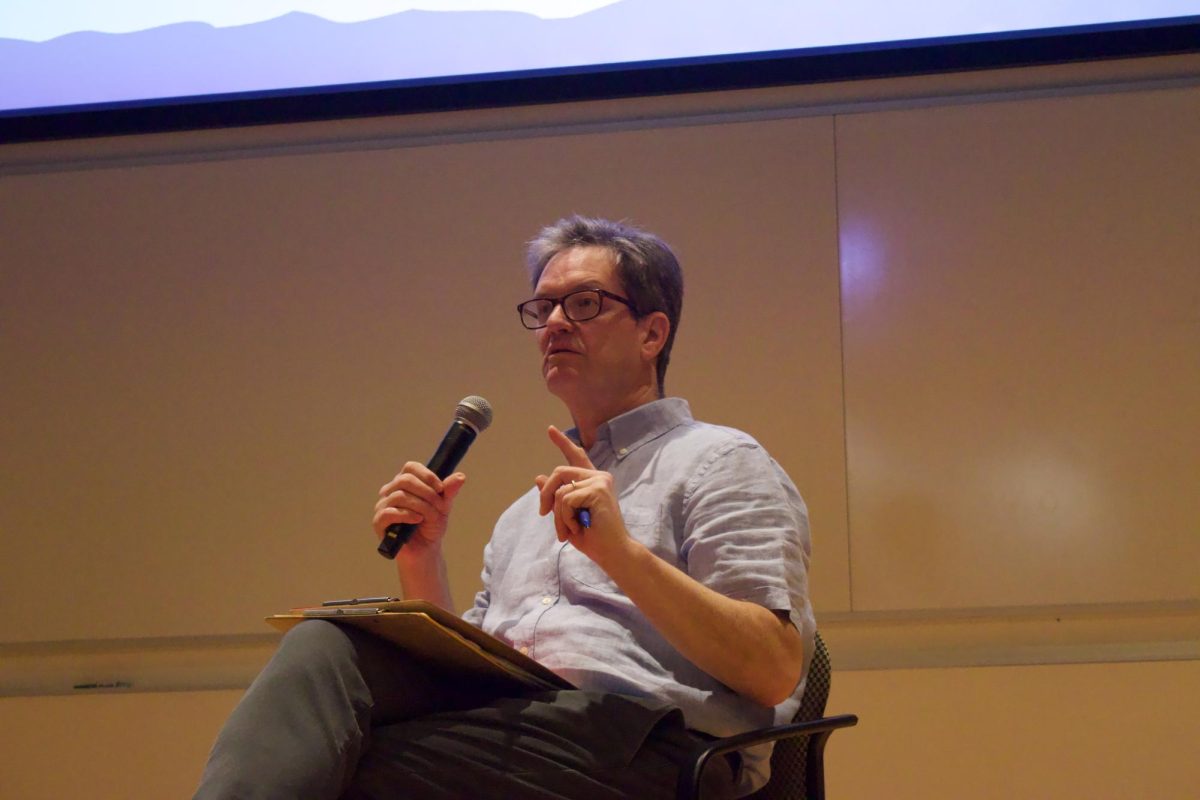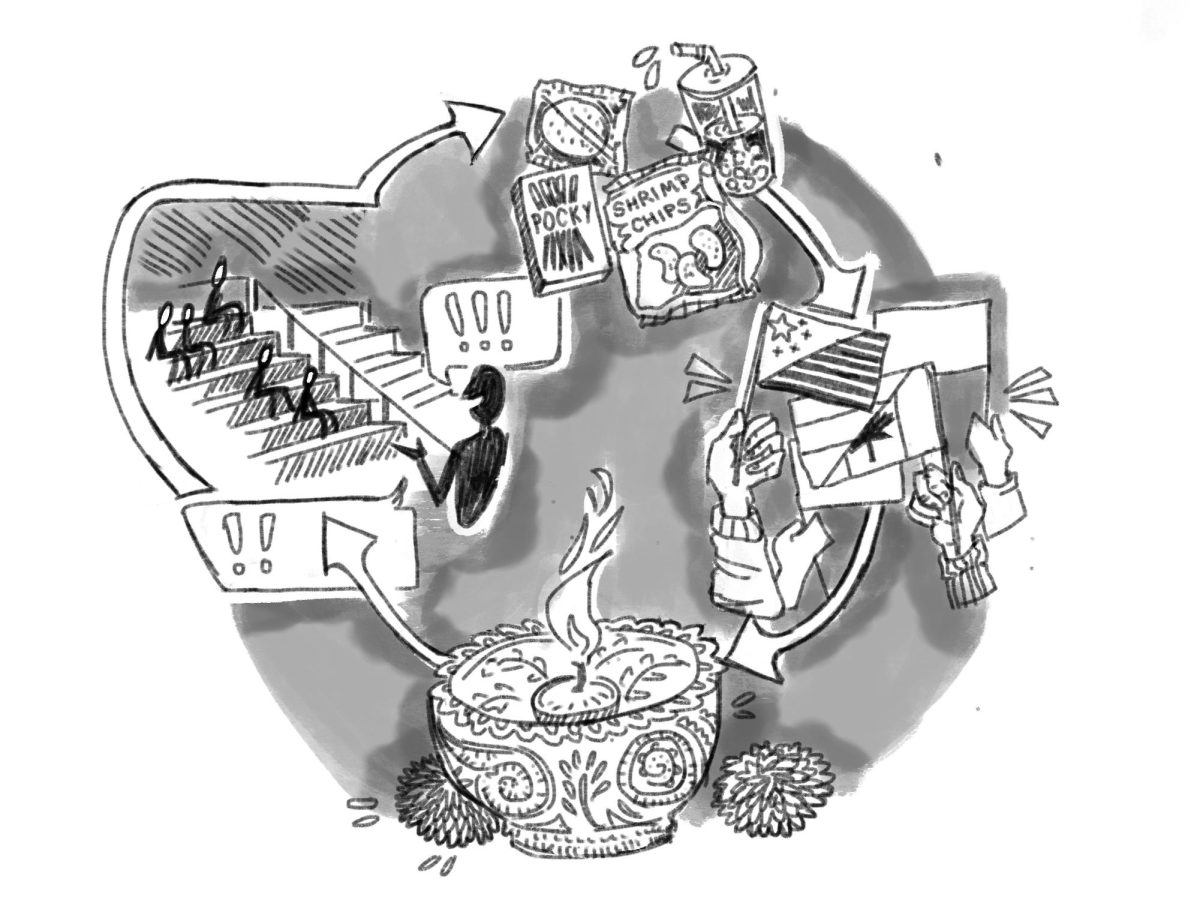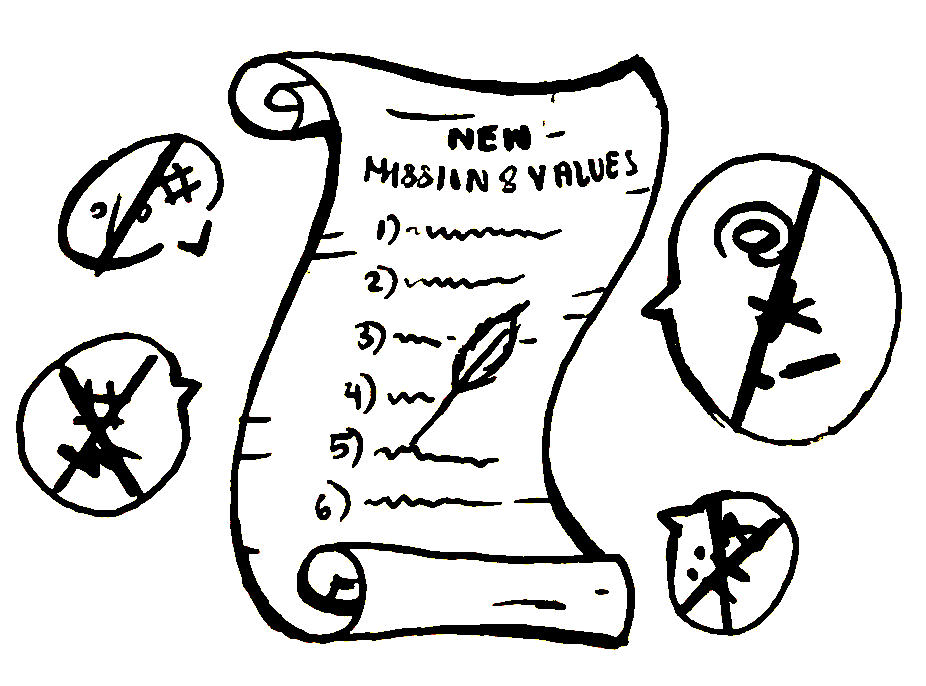It has been more than two years since Open AI launched ChatGPT, and generative artificial intelligence has come a long way since. While AI can be used as a tool in academic settings, it can also violate academic integrity. To ensure that students produce original work, many teachers have implemented in-class timed writing and adopted the use of online exam platforms, such as Exam.net.
The biology teachers decided to replace formal take-home lab reports with in-class timed writes this school year over concerns about academic integrity. “There were concerns that text was ending up in some students’ lab reports without having been generated by them, whether originating from another student’s work or generated by AI,” biology teacher Cristina Weaver said.
While biology teacher Todd Hardie has not seen specific instances of students using AI, he has caught students sharing lab reports. “Oftentimes, the person who shared their lab report would not be aware somebody else was using their information,” he said.
On the day of the timed lab writing, Biology students are allowed to bring their completed pre-lab to class to use in the timed writes. Students receive six prompts days in advance but are only tested on three selected by the teachers on the day of the timed write.
Each block answers a different subset of questions, and students have the whole class period to respond to the prompts. “[Students] could create their own outlines, they could come up with whatever they wanted to ahead of time, and then when they would come in, hopefully they had given some thought to the questions,” Hardie said.
Although the timed writes prevent students from plagiarizing, Hardie still assumes that some students are using AI. “Even if they are [using AI], at least they’re taking time to process the question and try to fully understand it, so hopefully they can come back and articulate with reasoning that, yeah, maybe they have looked up,” Hardie said.
Weaver agrees with Hardie. “Whatever students write has to come from their own brain, at least in the moment they are writing it, because they do not have access to the internet, nor any other sources of information besides their prelab and data, during the writing process,” she said. “That said, since all students have the prompts ahead of time, they can certainly talk with each other and use other resources to prepare ahead of time.”
According to Hardie, students who write samples for each question typically perform well on the timed writes. Junior Krista Arreola appreciates that she can prepare in advance. “We get the questions before so you know what you’re going to get, and it’s just easier to prepare for,” she said.
Junior Sachin Sandhu agrees with Arreola. “Say I don’t understand something, it’s great that I can go talk to my teacher and see what they are looking for in the question,” he said. “And then also, it’s just a little bit less stressful from a lab report.”
Sandhu doesn’t think using AI to prepare for the questions beforehand violates academic integrity. “That’s just like having someone else explain it for you. And then, you still get an understanding from that,” he said.
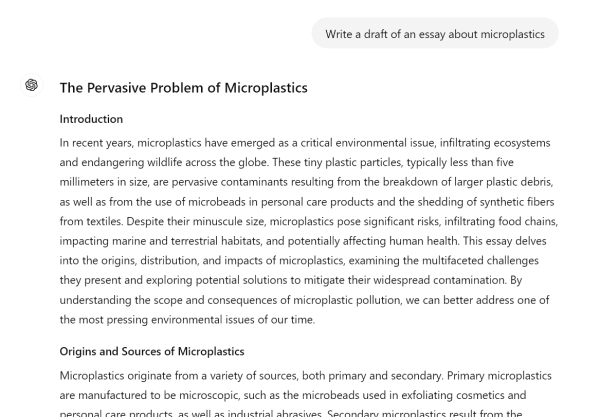
Arreola also thinks timed writes are fairer than lab reports because students do not know which questions they will be assigned until the day of. “I think it’s way better than a take-home lab report because I think just more cheating would happen,” she said.
However, junior Sulia Gayle disagrees with Arreola. “I think a couple of questions can not truly encapsulate your learning in the lab,” she said. “In [timed] lab write-ups, teachers are very picky in terms of how you demonstrate your answers.” Gayle feels that there are other effective ways of preventing students from using AI, such as AI plagiarism checkers and video tracking while a student writes on Google Docs.
The timed writes are a work in progress. “We’re all still evaluating if we like them or not,” Hardie said.
In contrast, the History department has made no formal changes with the advent of AI. Individual teachers decide how and when they want to use AI in the classroom. Within the department, teacher perspectives vary broadly from AI proponents to opponents.
“Individual teachers [counsel students] about the importance of integrity as a value at the school,” History Department Chair Katharine Hanson said. “Some teachers will try to delineate the circumstances where AI is appropriate and encouraged […] [and] point out to students where AI leads them astray.”
For in-class writing assessments, both biology and history classes have implemented the testing proctor website exam.net, which blocks students from opening other tabs. History teachers also review the Google Docs version history or utilize an AI detector to spot AI usage in non-proctored work. However, AI detectors can be unreliable, so teachers must remain vigilant when grading.
“[In reading students’ work,] I’m looking for voice [and] the kind of communication that I’m used to having from them,” Hanson said. “I don’t want super formulaic texts that you get from AI. I mark that as boring and uninspiring and that’s not what I want to be reading.”
Other teachers are more equivocal. History teacher Dylan Citrin Cummins views AI as a “double-edge sword.”
“[AI] can really help students unpack challenging texts and help brainstorm and help organize ideas and really improve efficiency in the learning process. […] But it can also, as we’re all aware, replace thinking,” Cummins said.
Though many department teachers have pivoted to in-class assessments and timed writes to circumvent student AI usage, Cummins still sees take-home projects as the most effective evaluative tool for learning history or psychology as it provides the opportunity for deep thinking and research.
“Timed high-pressure contexts are not always the most conducive to demonstrate that depth of understanding […] I like giving students a lot of time to demonstrate their depth of learning and [to] access to all their resources,” Cummins said.
Cummins believes that a potential solution to reducing AI usage is to create unique assessments that require student creativity. In his psychology class, Cummins assigned students to interview an adult about a breakup; since this project requires an original experience with unique responses, AI tools would be of limited value.
The English department has also shifted from Google Docs, used in previous years, to exam.net for timed writing to ensure that students produce their own work. This shift to in-class proctored writing under time can be daunting to students, particularly underclassmen, who have only nominally practiced in-class timed writing. Despite being a more difficult format, sophomore Celina Chen understands the reason for the change. “I think our teachers trust us mostly to not use [AI tools], but it’s still better for them to take a precaution,” she said.


